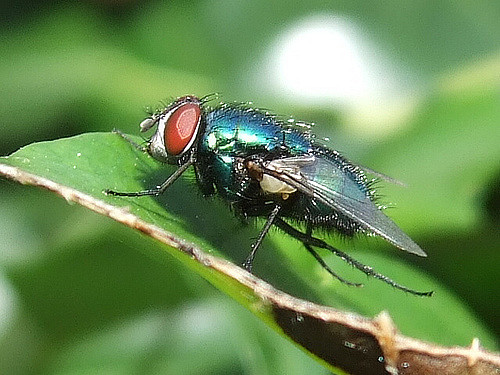Head direction cells are one of several types of cells that help orient mammals in their surroundings. They use environmental cues and the body’s innate sense of motion to construct a reference coordinate system with respect to the head’s orientation. Each nerve is assigned a specific direction, like northeast, and only activates when the head is pointed in that direction. Dr. Vivek Jayaraman and Johannes Seelig at the Howard Hughes Medical Institute’s Janelia Research Campus have discovered a similar cluster of nerves in the brains of flies that might shed more light on how the more complex mammalian head direction cells function.
Image source: Akindo
The team discovered a donut-shaped cluster of nerves called the ellipsoid body in flies’ brains that activates in a pattern matching the direction the fly moves. In the study, the researchers glued flies to a metal rod to keep them in place as they walked on top of a spherical treadmill. The flies’ brains were genetically modified to glow when activated, allowing researchers to use a special laser scanning microscope to see which neurons were active as the flies walked.
The flies walked on the treadmill in two situations: one immersed in virtual reality and the other in total darkness. Virtual reality was established by displaying a series of vertical and horizontal lines on a screen in front of the fly on the treadmill. The team found that the flies walked toward the vertical lines and that a single group of nerves in the ellipsoid body activated to follow the motion the lines. A similar pattern of neuron activation occurred in the dark—single points of activation in the ellipsoid body moved with the fly and even retained memory of where the fly was for more than 30 seconds without moving. The similarity indicates that the ellipsoid body functions similarly to the head direction cells in mammals.
Other insects like monarch butterflies also have spatial awareness neurons that react to polarized light from the sun, but the neurons in flies seem to bear resemblance to the neural circuitry in mammalian brains. According to Dr. Jayaraman, “The bottom line is that I think we’re starting to see increasing evidence that the fly may have a lot to tell us about how our own brains work, even when it comes to more complex aspects of cognition” (HHMI News).
Feature Image Source: fly by steve p2008










